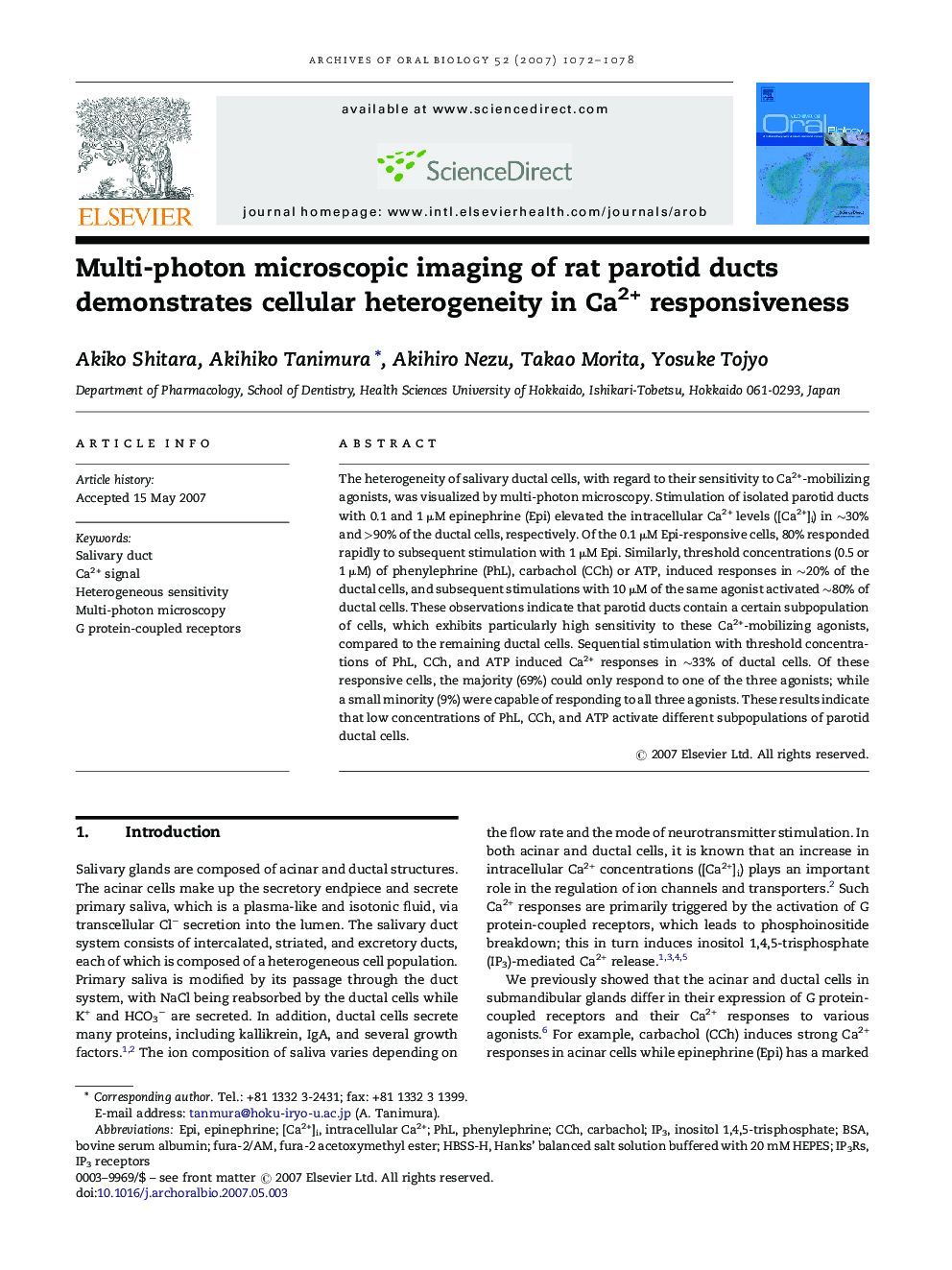| Article ID | Journal | Published Year | Pages | File Type |
|---|---|---|---|---|
| 3121861 | Archives of Oral Biology | 2007 | 7 Pages |
The heterogeneity of salivary ductal cells, with regard to their sensitivity to Ca2+-mobilizing agonists, was visualized by multi-photon microscopy. Stimulation of isolated parotid ducts with 0.1 and 1 μM epinephrine (Epi) elevated the intracellular Ca2+ levels ([Ca2+]i) in ∼30% and >90% of the ductal cells, respectively. Of the 0.1 μM Epi-responsive cells, 80% responded rapidly to subsequent stimulation with 1 μM Epi. Similarly, threshold concentrations (0.5 or 1 μM) of phenylephrine (PhL), carbachol (CCh) or ATP, induced responses in ∼20% of the ductal cells, and subsequent stimulations with 10 μM of the same agonist activated ∼80% of ductal cells. These observations indicate that parotid ducts contain a certain subpopulation of cells, which exhibits particularly high sensitivity to these Ca2+-mobilizing agonists, compared to the remaining ductal cells. Sequential stimulation with threshold concentrations of PhL, CCh, and ATP induced Ca2+ responses in ∼33% of ductal cells. Of these responsive cells, the majority (69%) could only respond to one of the three agonists; while a small minority (9%) were capable of responding to all three agonists. These results indicate that low concentrations of PhL, CCh, and ATP activate different subpopulations of parotid ductal cells.
